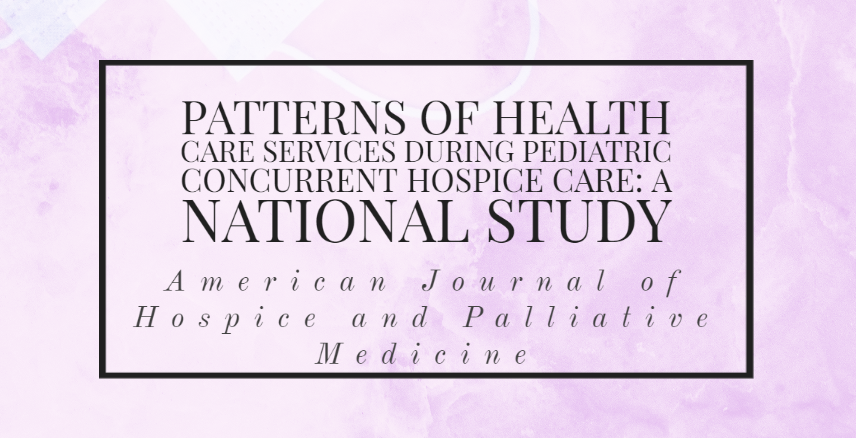Patterns of health care services during pediatric concurrent hospice care: A national study American Journal of Hospice & Palliative Medicine, 39(3), 282-288.
Lisa C. Lindley, PhD, RN, FPCN, FAAN, Associate Professor, Radion Svynarenko, PhD, Postdoctoral Fellow, Kim Mooney-Doyle, PhD, RN, CPNP-AC, Assistant Professor, Annette Mendola, PhD, HEC-C, Director of Clinical Ethics, Associate Professor, Wendy C. Naumann, PhD, Consultant, and Jessica Keim-Malpass, PhD RN, Associate Professor
Abstract
Background:
Children at end of life have unique and complex care needs. Although there is increasing evidence about pediatric concurrent hospice care, the health care services received while in hospice have not received sufficient attention.
Objectives:
To examine the health care services, unique clusters of health care services, and characteristics of the children in the clusters.
Methods:
Multiple data sources were used including national Medicaid claims data. Children under 21years in pediatric concurrent hospice care were included. Using Medicaid categories assigned to claims, health care services were distributed across 20 categories. Latent class analysis was used to identify clusters of health care services. Demographic profiles of the clusters were created.
Results:
The 6,243 children in the study generated approximately 500,0000 non-hospice, health care service claims while enrolled in hospice care. We identified 3 unique classes of health care services use: low (61.1%), moderate (18.1%), and high (20.8%) intensity. The children in the three classes exhibited unique demographic profiles.
Conclusions:
Health care services cluster together in unique fashion with distinct patterns among children in concurrent hospice care. The findings suggest that concurrent hospice care is not a one-size-fit all solution for children. Concurrent hospice care may be customized and require attention to care coordination to ensure high-quality care.
Keywords: Pediatric hospice care, concurrent hospice care, health care services, Medicaid, latent class analysis, administrative data
